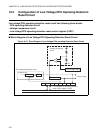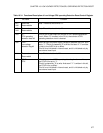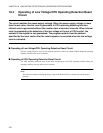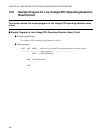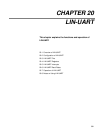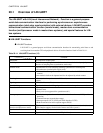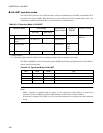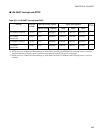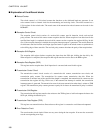
382
CHAPTER 20 LIN-UART
20.1 Overview of LIN-UART
The LIN-UART with LIN (Local Interconnect Network) - Function is a general-purpose
serial data communication interface for performing synchronous or asynchronous
communication (start-stop synchronization) with external devices. LIN-UART provides
bidirectional communication function (normal mode), master-slave communication
function (multiprocessor mode in master/slave systems), and special features for LIN-
bus systems.
■ LIN-UART Functions
●
LIN-UART functions
LIN-UART is a general-purpose serial data communication interface for transmitting serial data to and
receiving data from another CPU and peripheral devices. It has the functions listed in Table 20.1-1 .
Table 20.1-1 LIN-UART Functions (1/2)
Function
Data buffer Full-duplicate double-buffer
Serial input Perform oversampling 5 times and determine the received value by majority
decision of sampling time (asynchronous mode only)
Transfer mode
•
Synchronous to clock (selecting start/stop synchronous or start/stop bit)
•
Asynchronous (start/stop bits can be used.)
Baud rate
•
Dedicated baud-rate generator (The baud rate is consisted of 15-bit reload
counter.)
•
An external clock can be inputted and also be adjusted by reload counter.
Data length
•
7 bits (other than synchronous or LIN mode)
•
8 bits
Signal type NRZ (Non Return to Zero)
Start bit timing Synchronization to the falling edge of the start bit in the asynchronous mode
Detection of receive error
•
Framing error
•
Overrun error
•
Parity error (not supported for operation mode 1)
Interrupt request
•
Receive interrupt (receive termination, detection of receive error, LIN Synch break
detection)
•
Transmit interrupt (transmit data empty)
•
Interrupt request to ICU (LIN Synch field detection: LSYN)
•
Both the transmission and reception support EI
2
OS
Master/slave type communication
function (multiprocessor mode)
This function enables communication between 1 (only use master) and n (slave)
(This function supports for the both of master and slave system.)
Synchronous mode Master of slave function
Pin access Capable of reading the state of serial I/O pin directly



